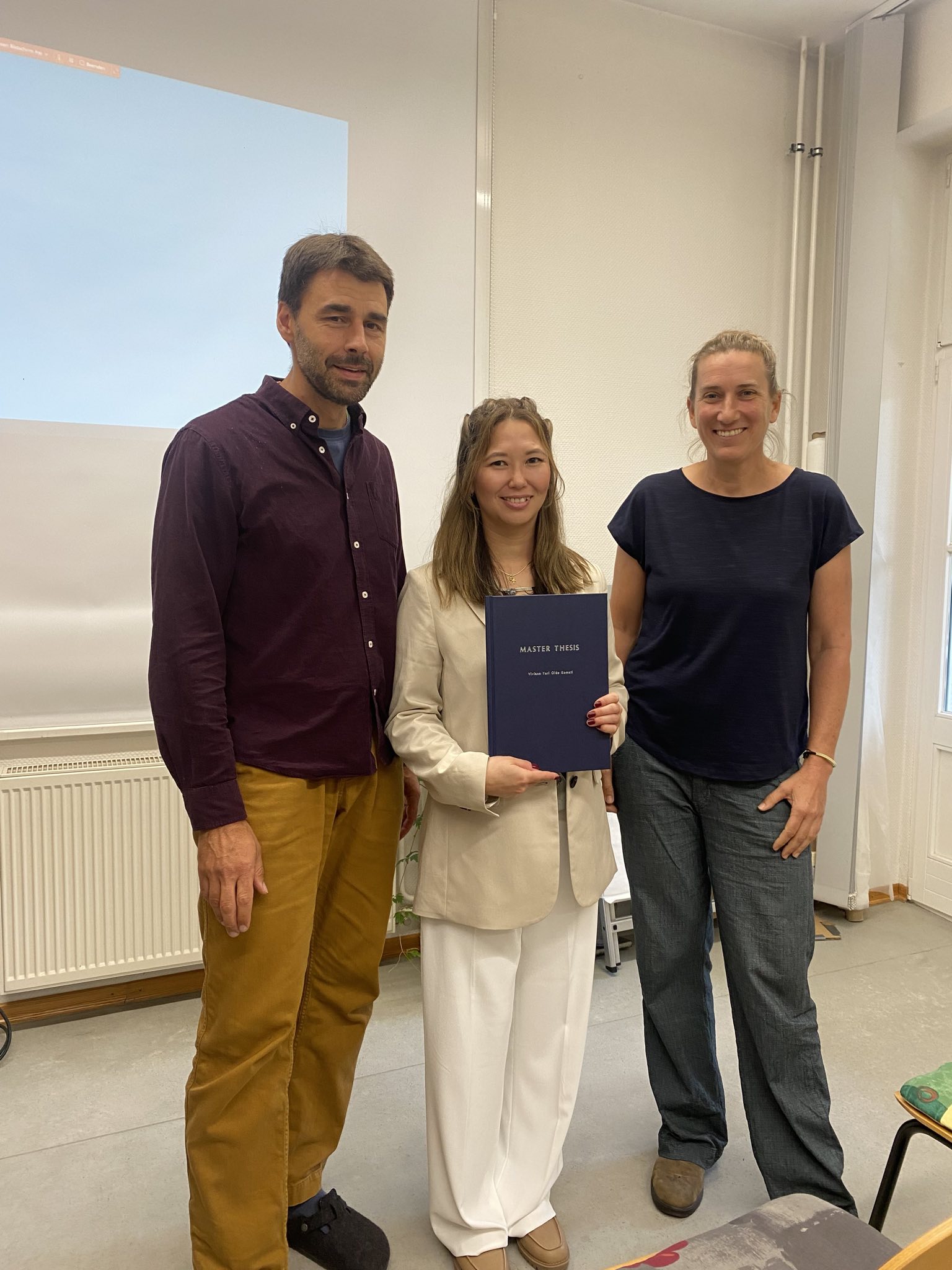Masterarbeit über Große Tümmler
Kürzlich hat Viviane Yuri Oide Komati ihre Masterarbeit unter der Leitung von Prof. Dr. Dominik Martin-Creuzburg am Institut für Gewässerökologie der Brandenburgischen Technischen Universität Cottbus-Senftenberg abgeschlossen. Diplombiologin Christina Sommer von M.E.E.R. e.V. wirkte als externe Betreuerin und Zweitgutachterin. Unter dem Titel “Einflussfaktoren auf die Gruppengröße und -zusammensetzung Großer Tümmler (Tursiops truncatus) in den Gewässern vor La Gomera” analysierte Viviane einen Teil der seit 26 Jahren laufende Sichtungsdatenbank des M.E.E.R. e.V.. Dabei stieß sie auf interessante Zusammenhänge zwischen der Gruppengröße und -zusammensetzung von Großen Tümmlern mit Umweltfaktoren wie Jahreszeit, Meeresoberflächentemperatur und Bathymetrie (Topographie des Meeresbodens). In den Sommermonaten (Juli-September) beobachtete sie größere Gruppen mit Kälbern und Jungtieren, die zudem höhere Wassertemperaturen von über 22°C bevorzugten. Als weiterer positiver Einfluss auf die Gruppengröße stellten sich Gewässer mit einer Tiefe von bis zu 1500m heraus. Die Arbeit hat sie am 30. August in Bad Saarow erfolgreich verteidigt. Das PDF der Masterarbeit findet ihr auf unserer Website unter der Rubrik “Publikationen“. Eine Zusammenfassung ihrer Ergebnisse auf Englisch folgt hier:
Abstract
This paper provides findings of 26 years (1995-2020) of research on bottlenose dolphins’ distribution and the factors influencing group size and composition in the southwest coast of La Gomera, Canary Islands. Data was collected repeatedly in all months of the years using Wboats of a whale watching operator as platforms of opportunity, in an area encompassing and extending beyond the current Special Area of Conservation (SAC), where an estimated stable resident population of 50 animals inhabits. The relationship between grouping pattern and environmental and topographic variables (sea surface temperature, chlorophyll-a, salinity, benthic slope, bathymetry and distance to coast), social structure (presence of calves and juveniles), temporal variation (months and years) and group behavior were analyzed using different models. Group size ranged between 1 and 500 individuals (mean = 18.96, median = 13), including residents and non-residents, and varied significantly within months and across years. Significant monthly and inter-annual variations in bottlenose dolphin abundance and group composition were also observed. Abundance and larger group sizes with the presence of calves and juveniles were higher during the summer months (July-September). Sea surface temperature, bathymetry and the presence of calves and juveniles were identified as the best predictors, positively influencing bottlenose dolphins’ group size. Overall, larger group sizes tended to occur in warmer waters (> 22°C) and where bathymetry is up to 1500 m. Sea surface temperature was the only variable affecting groups with calves and juveniles, which tended to prefer warmer waters. The observed patterns are likely to be related to breeding seasonality, calving protection and prey availability. Larger groups foraging/feeding, resting, or socializing were also observed, suggesting that individuals can benefit from an increase in foraging efficiency, protection against predators and mating opportunities. This study reveals how different variables can influence bottlenose dolphin grouping patterns in the waters off La Gomera and highlights the importance of oceanic islands and coastal areas for calving and habitat use. However, the results support the need for further investigations to better understand population trends, movement patterns and prey distribution to guide potential management conservation. Finally, the present study illustrates the importance of mitigating the increasing anthropogenic threats to this species and recommends an improvement of regulations inside its borders.
